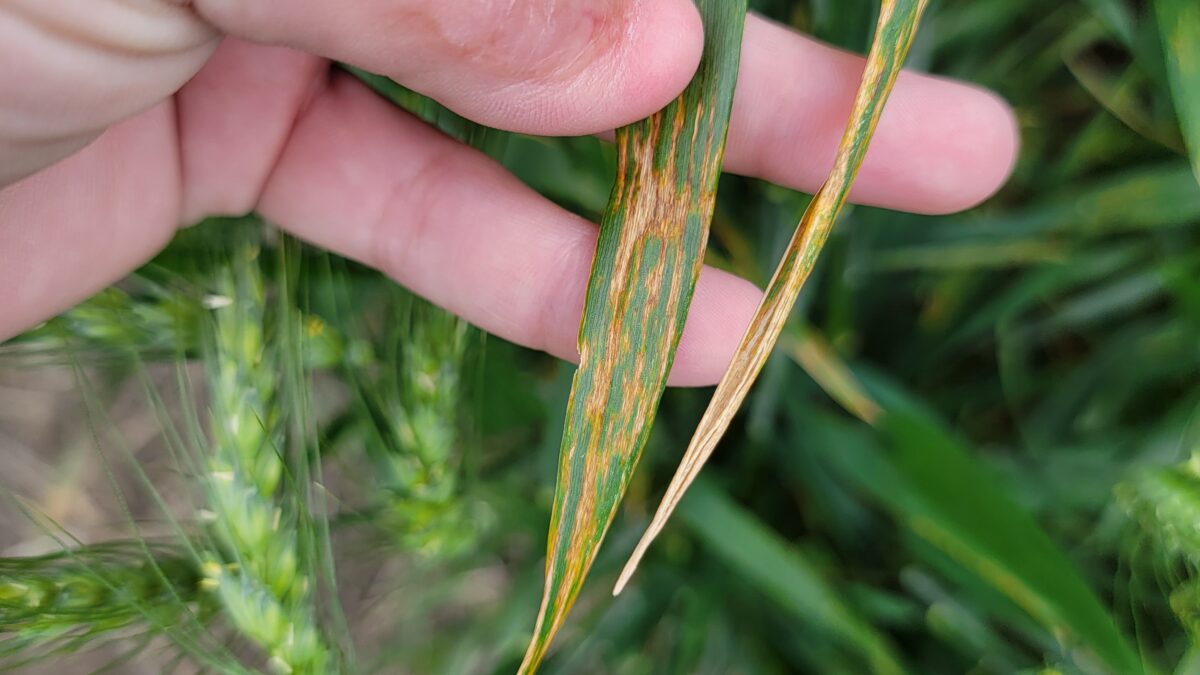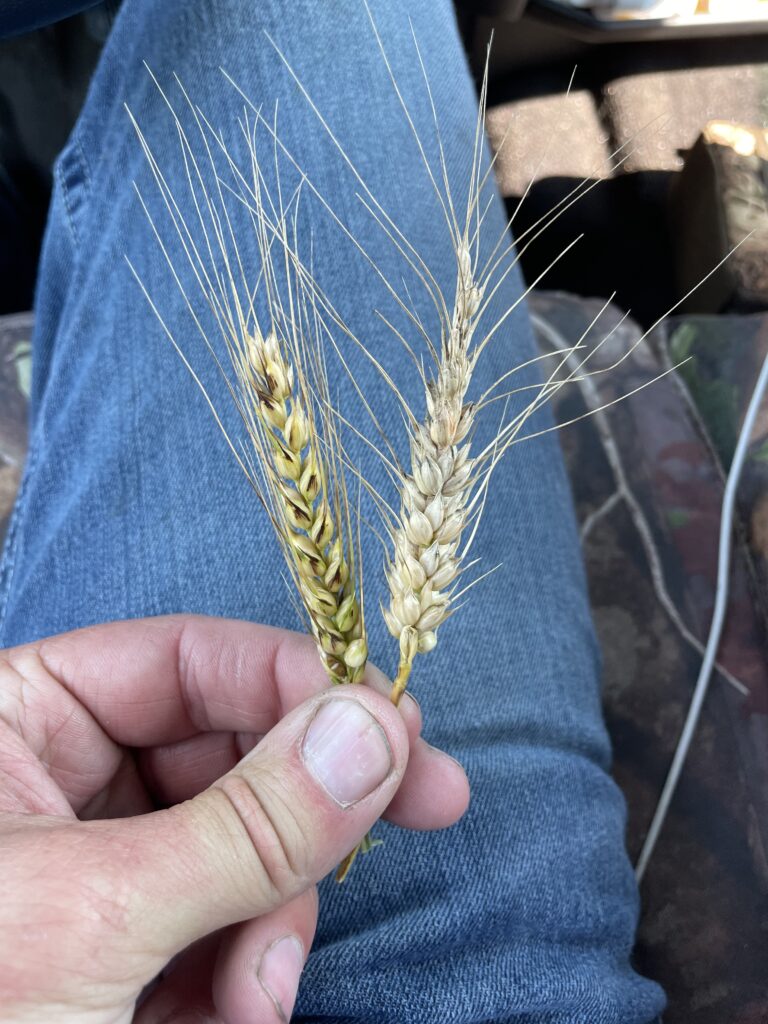Bacterial Leaf Streak – What Could It Cost You?

In the last few years, Bacterial Leaf Streak (BLS) has become a growing concern for regional wheat growers… for good reason. Much like Goss’s wilt in corn, BLS is a bacterium that reduces yield by limiting the photosynthetic capability of the leaves.
Yield reduction depends upon infection time and severity, but reductions of over 50% have been documented. Even a 20% reduction in yield with a $6.50/bu price at 70 bpa would result in a loss of over $90/acre! (Yes, we know. Market prices and yields are just examples. The point still stands.)

Identifying BLS: Left: BLS(Black Chaff) / Right: FHB
BLS typically enters the plant through wounds following storms or prolonged leaf wetness. BLS can infect the plant at various growth stages, but the closer to the flag leaf stage, the more yield loss can occur. The flag leaf is an essential yield component in wheat as it alone is responsible for 40-45% of the grain yield.
The leaf below the flag, called the penultimate, is responsible for another 20-25%, along with the grain head itself, which can also get infected. When BLS infects the glumes, it can cause purplish/black streaking and eventually discolor the kernels, a symptom known as black chaff. BLS can be seed-borne but is also found in crop debris and other grass-host crops along field edges.
BLS can look similar to spot or net blotch, which is a fungus, not a bacteria. The primary way to discern between the two is that BLS (and all bacteria) creates an “ooze” that gives off a shiny appearance.
Since BLS is a bacterium, no chemical management options are available, and variety selection is a grower’s best defense. Complete resistance isn’t an option, but susceptibility levels vary significantly among wheat varieties. When selecting wheat for your operation, I advise growers to consider BLS and FHB of similar importance.
Click to download an NDSU Extension publication on Bacterial Leaf Streak and Black Chaff of Wheat.



